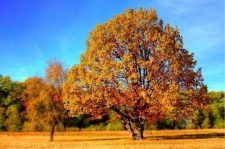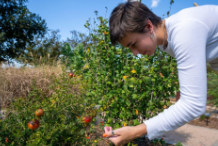Mistakes that potentially end up contributing to the death of the new tree that was purchased. These are only some of the biggest mistakes.
1. Before even purchasing a tree do some homework and learn what type of soil on the property and particularly the location of the tree. Every tree has either a range of soils or a soil type that the tree prefers. Elm trees are tolerant of clay, loam or sand that is both acid and alkaline soil.
2. When shopping at the nursery, check to see the overall health of the plant. No diseased leaves or insects on the tree. It is best to research about these issues for the tree you want to purchase. Make sure the tree trunk is not damaged and there are no co-dominant leaders at the top of the trunk.
3. Make sure to check how deep the trunk is buried in the soil container. The soil can be higher up on the trunk. When planting the tree, then the tree can be planted too deep. All the excess soil must be knocked away from the trunk until the trunk meets the soil. Planting the roots too deep mitigates the amount of oxygen and water to the roots. Proper planting depth is located at the base of the trunk where the root flare meets the soil in the container. Then do not place much soil on the shoulders of the root ball or containerized plant. Do not place mulch or soil up against the trunk after planting. That creates moisture and can begin to damage the bark by causing decay. The bark is the skin of the tree and protects all the vascular structure within it.
4. When digging the hole for the tree, the hole must be shaped like a saucer that fits on the bottom of a teacup. The hole must be the proper depth for the root ball or container. The proper width of the hole is equally important. This must be two to three times the width of the root ball.
5. Watering is the most challenging thing to do. There is a recommended formula of ten gallons of water per every inch of the tree’s caliber at breast height. This is helpful to know when watering each time the tree needs watering. Factor in other environmental issues such as temperature, heat index, wind, and soil structure such as clay, sand, or loam.
If these steps are followed, the tree has the greatest chance of success.




